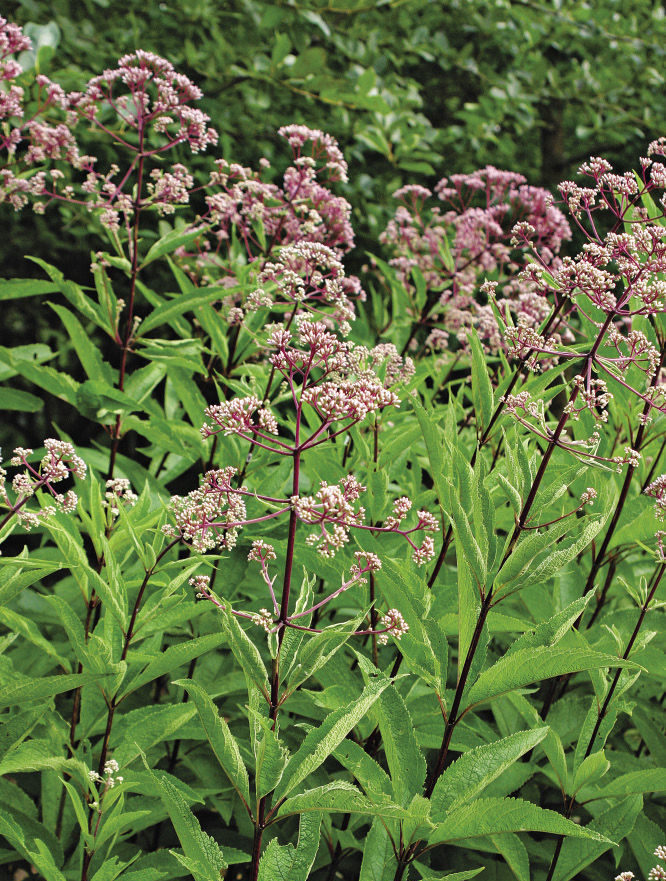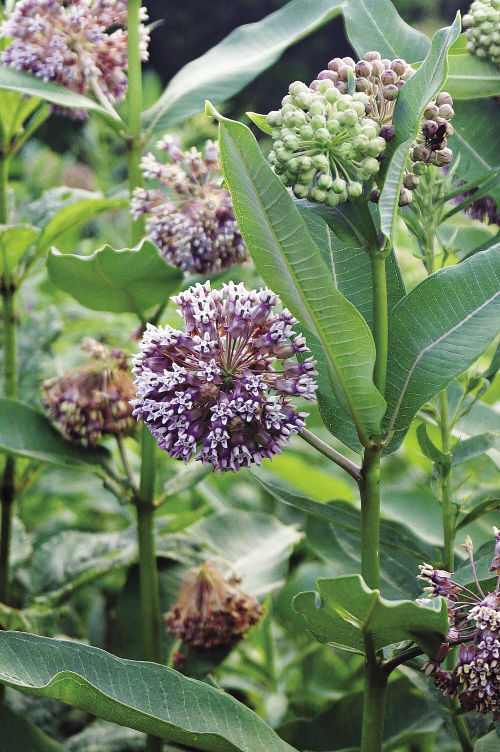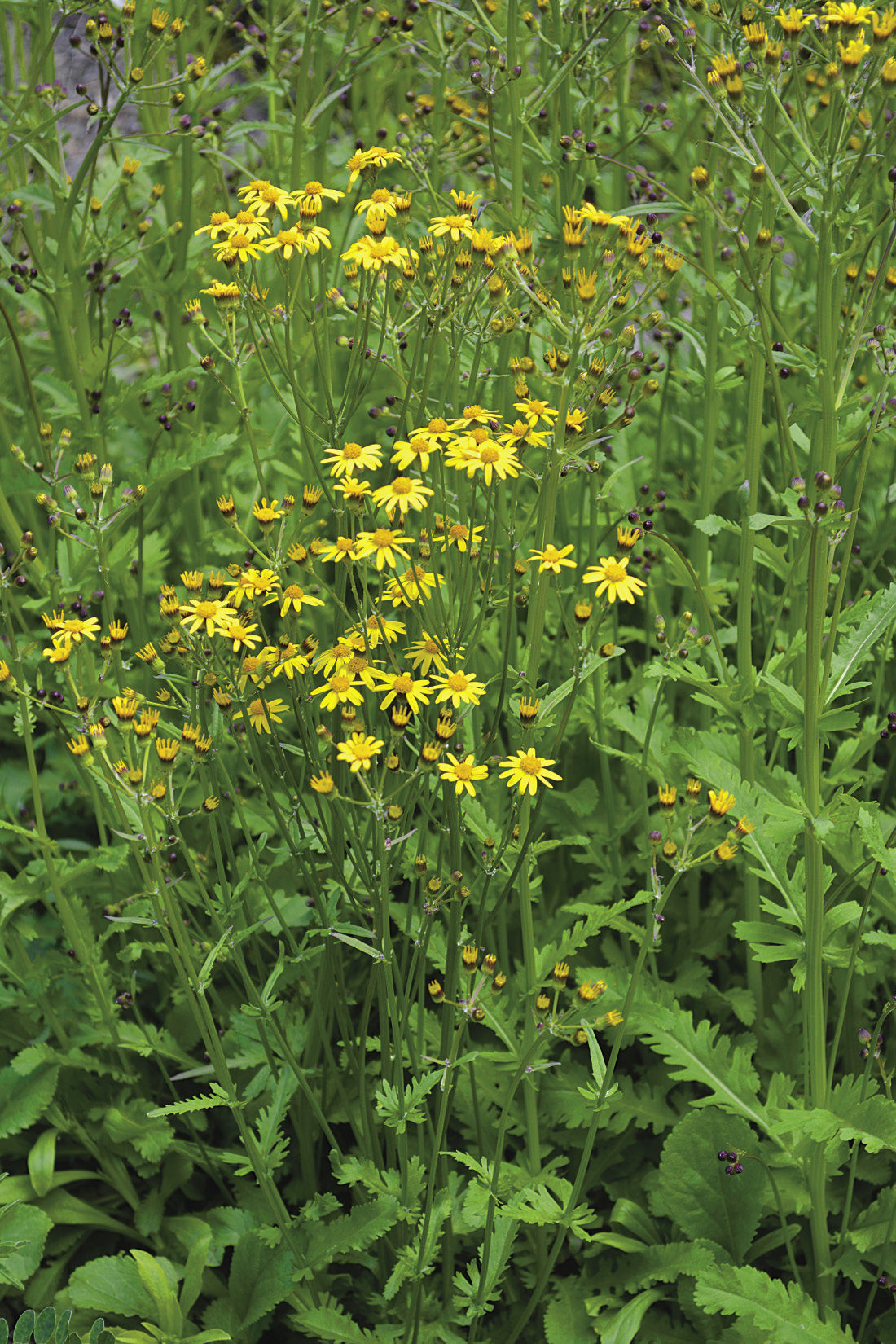
1. Wood Lily

Name: Lilium philadelphicum
USDA Hardiness Zones: 3 to 9
Size: 18 to 36 inches tall, 9 to 12 inches wide
Conditions: Full sun to partial shade; well-drained soil
In New England, wood lily is found growing in coastal sandplain grasslands, where its bright orange flowers are a stunning sight in a plant community often dominated by little bluestem (Schizachyrium scoparium, Zones 3–9). Because the flower is borne singly atop a stem that may reach 2 feet in height, wood lily can work well in a garden meadow, providing the site has good drainage and acidic soil. Wood lily is a colorful companion plant for tall grasses.
2. Spotted Joe-Pye Weed

Name: Eutrochium maculatum
Zones: 3 to 9
Size: 4 to 8 feet tall, 3 to 4 feet wide
Conditions: Full sun; moist to wet soil
Spotted Joe-Pye weed does well when interplanted with tall, warm-season grasses. In contrast to common milkweed, spotted Joe-Pye weed is happiest in wet soil, where purple flowers perch on stems as tall as 8 feet in mid- to late summer. Because it can tolerate wet feet and periods of dry soil, spotted Joe-Pye weed makes an ideal accent plant for rain gardens.
3. Common Milkweed

Name: Asclepias syriaca
Zones: 3 to 9
Size: 2 to 3 feet tall, 9 to 18 inches wide
Conditions: Full sun; tolerates a range of soil moisture
Every gardener should include some milkweed in their designs to attract monarch butterflies and beneficial insects. Common milkweed is easy to grow and drought tolerant, and it can adapt to just about any soil type as long as there is adequate sunlight. It is a bold-textured, upright perennial that bears fragrant, pale purple flowers in summer. It spreads vigorously and works best with companions that can handle competition, including big bluestem (Andropogon gerardii, Zones 4–9) and Indian grass (Sorghastrum nutans, Zones 4–9).
4. Running Groundsel

Name: Packera obovata
Zones: 4 to 9
Size: 12 to 18 inches tall, 6 to 12 inches wide
Conditions: Full sun to partial shade; average to moist soil
Running groundsel is a spring-blooming perennial with bright yellow flowers. Its evergreen foliage emerges purple before fading to green, offering a splash of color very early in the season. As its name suggests, running groundsel sends out runners that form new plants, and, over time, it grows into a dense mat that serves as a living mulch. Although it prefers full sun during its active growth period in spring, it can tolerate the shade cast by taller grasses and perennials in summer.
Mark Richardson is botanic garden director at New England Wild Flower Society’s Garden in the Woods in Framingham, Massachusetts.
Fine Gardening Recommended Products

Pruning Simplified: A Step-by-Step Guide to 50 Popular Trees and Shrubs
Fine Gardening receives a commission for items purchased through links on this site, including Amazon Associates and other affiliate advertising programs.

Planting in a Post-Wild World: Designing Plant Communities for Resilient Landscapes
Fine Gardening receives a commission for items purchased through links on this site, including Amazon Associates and other affiliate advertising programs.

The Nature of Oaks: The Rich Ecology of Our Most Essential Native Trees
Fine Gardening receives a commission for items purchased through links on this site, including Amazon Associates and other affiliate advertising programs.


















Comments
Log in or create an account to post a comment.
Sign up Log in